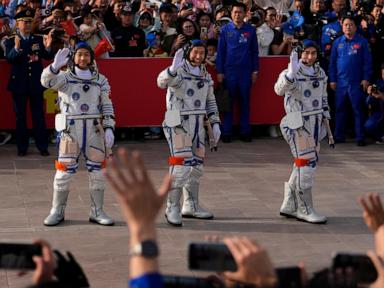Vast’s commercial space station could create opportunities that ISS couldn't

In 2023, a space company called Vast announced that it was developing a single-module commercial space station called Haven-1.
It will operate much like Skylab or the Manned Orbiting Laboratory were envisioned, as a human-tended facility. From time to time, a SpaceX Crew Dragon would deliver four astronauts to Haven-1 for 30 days of experiments and scientific observation. The space station was scheduled to launch in 2025.
Haven-1 is still scheduled to launch in 2025. However, Vast has already moved on to developing a much larger commercial space station called Haven-2.
Haven-2 is a proposal for NASA’s Commercial Leo Destination program, envisioned to create commercial successors to the International Space Station, which is scheduled to end service in 2030. If Haven-2 wins a Commercial Leo Destination phase 2 award in 2026, Vast intends to deploy the first module by 2028.
The first module of Haven-2 will be an enhanced version of Haven-1. It will be a fully functional space station from the beginning.
Between 2028 and 2030, Vast intends to build and launch 3 more modules, expanding Haven 2. By 2032, the company will add a large, seven-meter-diameter core module where the previous four modules will attach and add four more modules.
The resulting Haven-2 facility will be immense and filled with capabilities that could meet the needs of a wide variety of customers, both commercial and government.
One of the interesting features is that Haven-2 will be able to offer a dedicated lab or even an entire module to a specific customer. That feature should make it attractive to potential users who want to keep secrets, industrial or otherwise.
Two questions face the proposed Vast Haven-2 space station, which applies to all other commercial space station proposals.
First, is the concept technically plausible?
The answer is almost surely yes. Advances in launch technology, driven by SpaceX, but with other companies such as Rocket Lab and Blue Origin, mean that launching things into space, whether it’s satellites or pieces of a space station, has become cheaper and more practical.
Second, will the Vast Haven-2 and, by extension, other commercial space stations, become economically viable? Will Vast be able to make a profit?
The answer to that question depends on how much the Haven-2 costs. Besides the cost of building and deploying the facility, the year-to-year maintenance costs have to be considered, According to Space News, the International Space Station costs about $3.1 billion a year to operate, $1.3 billion for operations and $1.8 billion to take crew and cargo to and from the facility.
Whether the Haven-2 will cost as much as the ISS to maintain is an open question. Presumably, Vast can get the cost down with a better design.
Also, given a commercial space station, Vast will have to acquire a number of customers willing to pay for access to it.
NASA can be expected to be the core customer for Haven-2 when the ISS goes away. Vast will likely pitch the facility to other government space agencies, especially partners in the ISS such as the European Space Agency, the Canadian Space Agency and the Japanese Aerospace Exploration Agency.
Roscosmos is also a participant in ISS. Currently, Russia’s plan is to align itself with China. The politics of the 2030s may change enough to cause a post-Putin regime to rethink that plan.
India’s Indian Space Research Organization is not an ISS partner. ISRO might be enticed to rent Haven-2 services as it becomes a major space power. India will even have the Gaganyaan spacecraft to take its astronauts to and from the commercial space station.
The true test of the viability of a commercial space station will be if it can attract private customers. Recent experience at the ISS provides a guide.
Axiom Space has already conducted three private missions to the ISS. However, Axiom is planning its own commercial space station and would be unlikely to rent space on Haven-2, a competitor. Vast will have to drum up business from similar companies willing to pay for access to its commercial space station.
Vast and its competitors are placing a bet that as the cost of space travel continues to decrease, the market for access to a commercial space station will expand.
The first stage of the commercialization of space has occurred in the launch sector. The second stage will, hopefully, consist of gaining knowledge and creating marketable products in space.
Mark R. Whittington is the author of “Why is It So Hard to Go Back to the Moon?” as well as “The Moon, Mars and Beyond,” and, most recently, “Why is America Going Back to the Moon?” He blogs at Curmudgeons Corner.
Topics
-
Surging diabetes rate underscores vast opportunity in weight-loss drugs
Business - MarketWatch - 6 days ago -

China space station crew returns to Earth after 6 months in space
Tech - ABC News - November 4 -
German rail operator Deutsche Bahn closes station co-working spaces
World - Yahoo News - October 23 -
Four space station crew members head for Friday return to Earth
Top stories - CBS News - October 23 -
Space station crew gets medical evaluation after record 235-day mission
Top stories - CBS News - October 25 -

Nasa astronaut hospitalized after return from International Space Station
World - The Guardian - October 25
More from The Hill
-

Medicaid cuts in crosshairs as Trump, GOP take control
Politics - The Hill - 30 minutes ago -

What Trump's win means for renewable energy
Politics - The Hill - 30 minutes ago -

5 obstacles Republicans will face on the road to tax cuts
Politics - The Hill - 30 minutes ago -

The Memo: Gaetz seen as Trump pick most in danger of failing
Politics - The Hill - 30 minutes ago -

Republicans feel optimistic heading into New Jersey, Virginia elections
Politics - The Hill - 30 minutes ago
